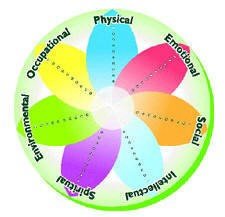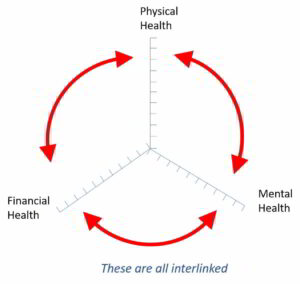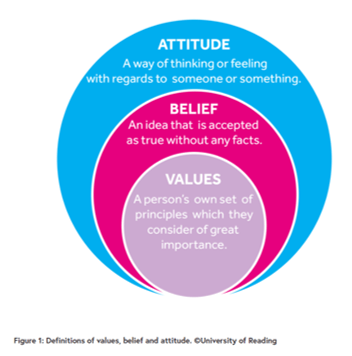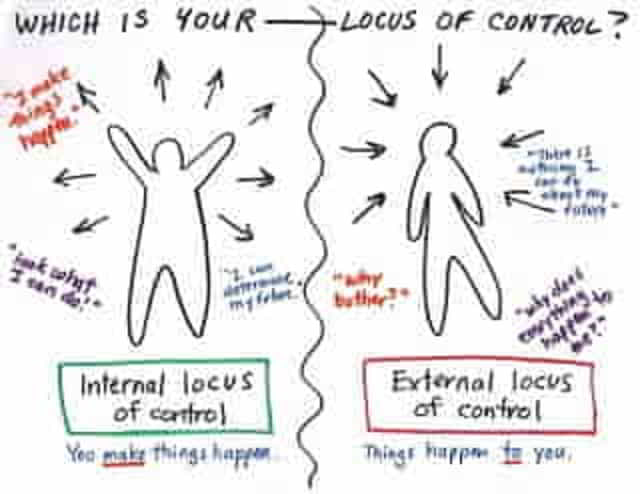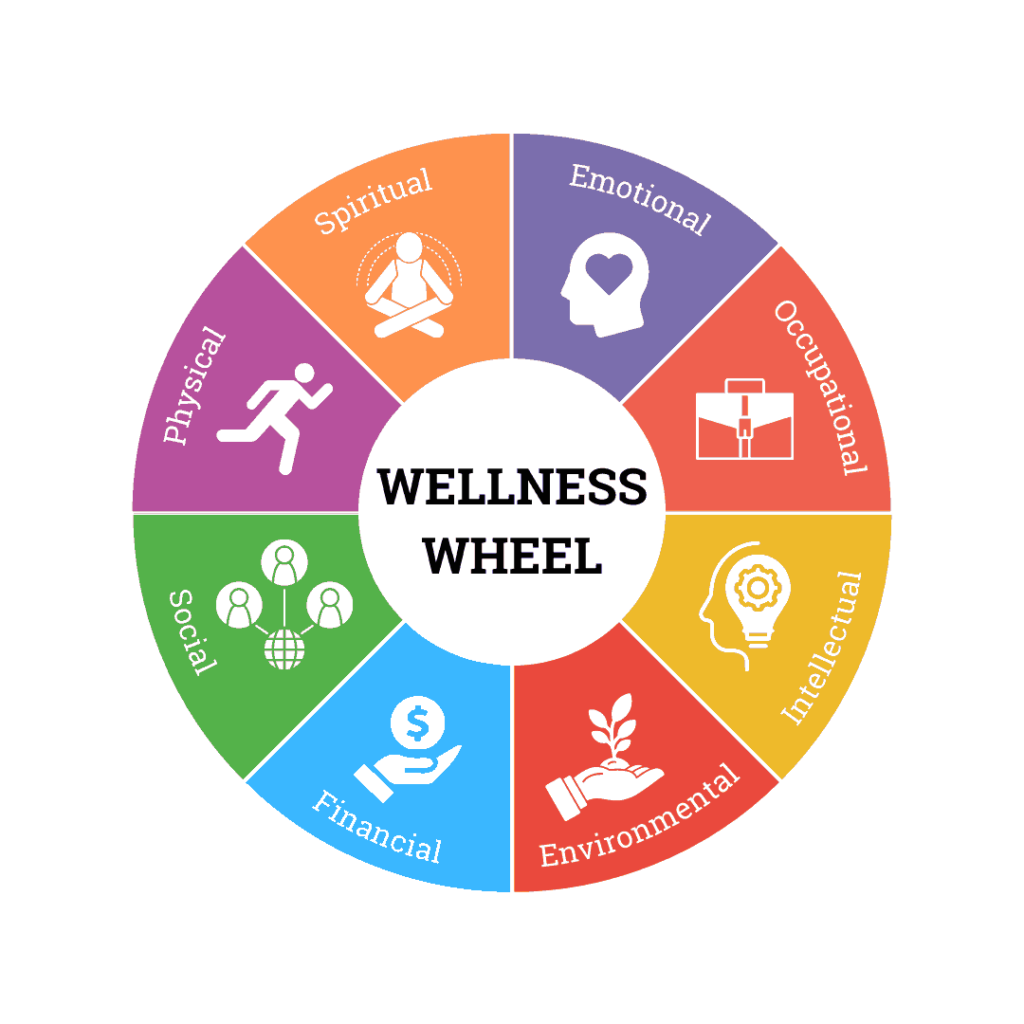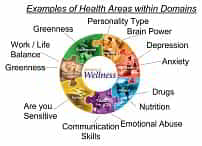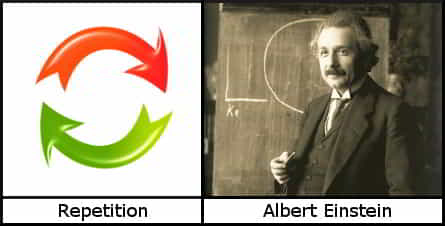Health
Physical, financial and mental health
One definition of health is:
Health is a state of complete physical, mental and social well-being and not merely the absence of disease or infirmity.
The NHS define health as: ‘We use a broad definition of health that encompasses both physical and mental health, as well as wellbeing. This means we are not only interested in whether or not people are ill or have a health condition, but also in how healthy and well they are.’
We believe we also have to consider financial health, as this can easily impact physical and mental health. Click the button to see an example of how these are connected.
It gets more complicated…
What is Health? How about Wellness, Wellbeing or Happiness?
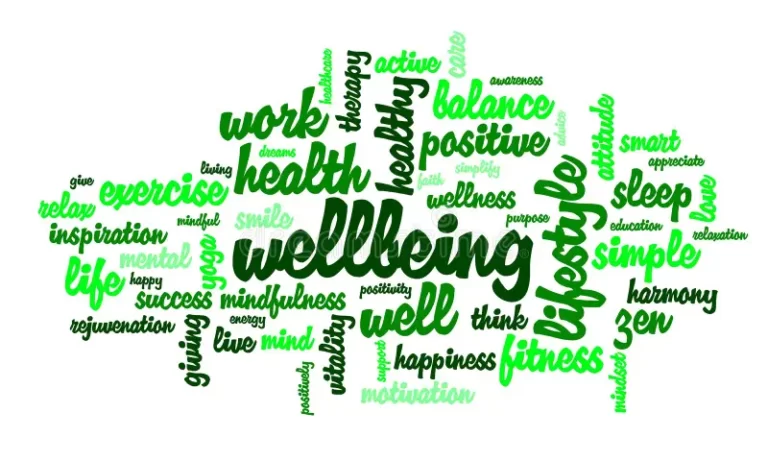
The Active Wellbeing Society (TAWS) define Health as a state of the overall mental and physical state of a person; the absence of disease. They define Wellbeing or wellness as a way of life that aims to enhance well-being and refers to a more holistic whole-of-life experience which also includes emotional and spiritual aspects of life. We expand on this definition of health to include financial health and mental health, to make it synonymous with wellbeing or wellness.
If you’re interested in finding out more information about the health (or well-being, or wellness) of people in the UK, and see how this is measured and the results.
We use ‘Health’ as the same as wellness, or wellbeing. A lot of work has been done trying to define what ‘wellness’ is. The Cambridge Dictionary defines wellness as the state of being healthy.
More than ever before, we hear the word ‘wellness’ in the news, in conversation and even at work. There is no universally-accepted definition of wellness. There is, however, a set of common characteristics seen in most thoughtful attempts at a definition of wellness. We generally see a reference to a “state of well-being,” which is vague, to say the least. Also frequently seen is a “state of acceptance or satisfaction with our present condition.”
The truth is wellness is a tough word to define. That said, we’ll leave it to Charles B. Corbin of Arizona State University who gives this definition of wellness: “Wellness is a multidimensional state of being describing the existence of positive health in an individual as exemplified by quality of life and a sense of well-being.”
Another definition we like: “Wellness is an active process of becoming aware of and making choices toward a more successful existence.
• Process means that improvement is always possible
• Aware means that we are continuously seeking more information about how we can improve.
• Choices means that we consider a variety of options and select those in our best interest.
• Success is determined by each individual to be their collection of life accomplishments.”
You need to understand how healthy you are, and how you make make improvements
Since caveman days, we have striven to improve our quality of life. We have evolved to seek the safe life, the good life, the happy life. Maslow’s hierarchy of needs set out survival first, then fulfil our needs, then thrive.
We know things can go wrong, but our resilience can enable us to overcome adversity. We can navigate unpredictability by using our mindset, attitudes and values. By making minor tweaks to these we make ourselves MORE resilient, MORE capable of dealing with problems as they occur.
At YouDrive Health we believe physical health, financial health and mental health are all linked – click the button to find more.
If you are to make any improvements, we need to understand more about ourselves. First of all – what makes us tick? What are our core values? Do we even know what values really are?
We need to know how healthy we are, where we are strong and where we are weak in terms of health, and what could stop us making improvements.
How healthy are you now?
We use questionnaires to allow you to determine how healthy you are. For example:
You can download this personal wellness quiz, which was drawn up by Plymouth University in the US and aims to make people aware of their position and think about their choices which could lead to a better lifestyle.
After this you can download a Wellness Recovery Action Plan from Community Mental Health Peer Advocacy and Support Service (COMPASS), which allows you to plan what you want to do and who can help you achieve it.
It’s all very well working out what needs to change, but CAN YOU CHANGE? We all know about ewsolutions that don’t last. Learn about your attitude to change.
Our last section on understanding yourself – what is your ‘locus of control‘? This reflects the fact that some people belive that they can make changes in their life, while some think that things just to them.
Health or Wellness or Wellbeing - its aspects
Dimensions of Health or Wellness or Wellbeing
If wellness is multidimensional, what are the dimensions of wellness? There are many sub-dimensions or domains, but we like the Dimensions of Wellness site which has the following:
1. Emotional Wellness: Awareness and acceptance of feelings
2. Spiritual Wellness: A search for meaning and purpose
3. Intellectual Wellness: Recognition of your creativity, knowledge and skills
4. Physical Wellness: Need for physical activity and balanced nutrition
5. Environmental Wellness: Positive awareness and impact on your environment
6. Financial Wellness: Debt reduction, cash flow balance or financial future planning
7. Occupational Wellness: Personal achievement and enrichment from your career
8. Social Wellness: Contribution to your community
You can decide for yourself how you fare in each of these domains, or you can take our simple questionnaire to see whether this backs up your feelings.
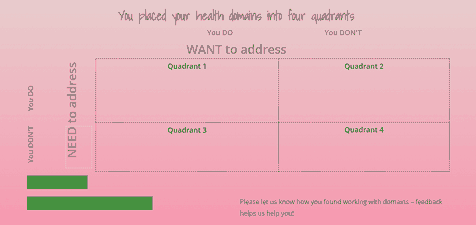
Prioritise your domains
You can’t change everything at once. We believe you should focus on one area and address that, then move on to the next. So you need to prioritise.
As well as thinking about which domains you are strong and weak in, you can consider which you should address first and which you want to address.
Health Areas within Domains
Within these domains we have specific health areas – a varying number in each domain. For each health area we have information and a questionnaire to determine how healthy you are in that area.
You can see which health areas we have in each domain.
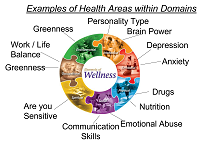
List the health areas you might want to addresss
Although you define the health area when you start an action plan (see below), here you can list the first few health areas you think you will tackle.
Improve your health in a specific area
We let you build your own action plan. You create an action plan and give it a name you’ll remember.
Then you choose the domain and health area you will focus on.
You also set out what your issue is in this area, and the outcome you’d like to achieve.
You can look at information on this health area. This will typically include general info, videos, reports to download and links to related sites.
It will also have a questionnaire on that health area, which you can take to see how healthy you are there.
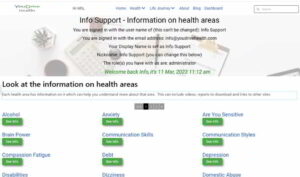
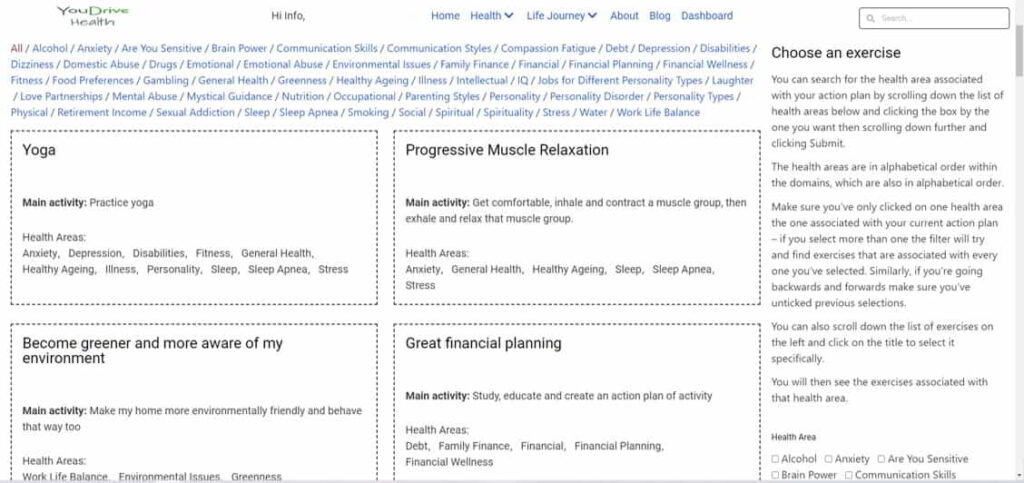
Having chosen your health area to work on and looked at the information on that area, including taking the questionnaire, you can look at exercises related to that area.
You can see a full list of exercises, or simply look at those we believe to be related to the health area.
Once you decide on an exercise, you can incorporate it into your action plan.
Having looked at the area and perhaps made a start, it may be that you are struggling to make the changes and need some help.
We are building a panel of experts who can provide you with the help and coaching you need, and you choose an expert to help you.
Once selected, this expert will again be added to your action plan.
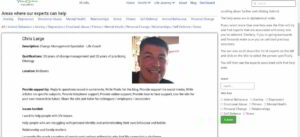
Your action plan may have a ‘main activity’ – the thing you’ll do most often to improve things.
You can start doing this activity and keep a record of each time you do it as part of your action plan
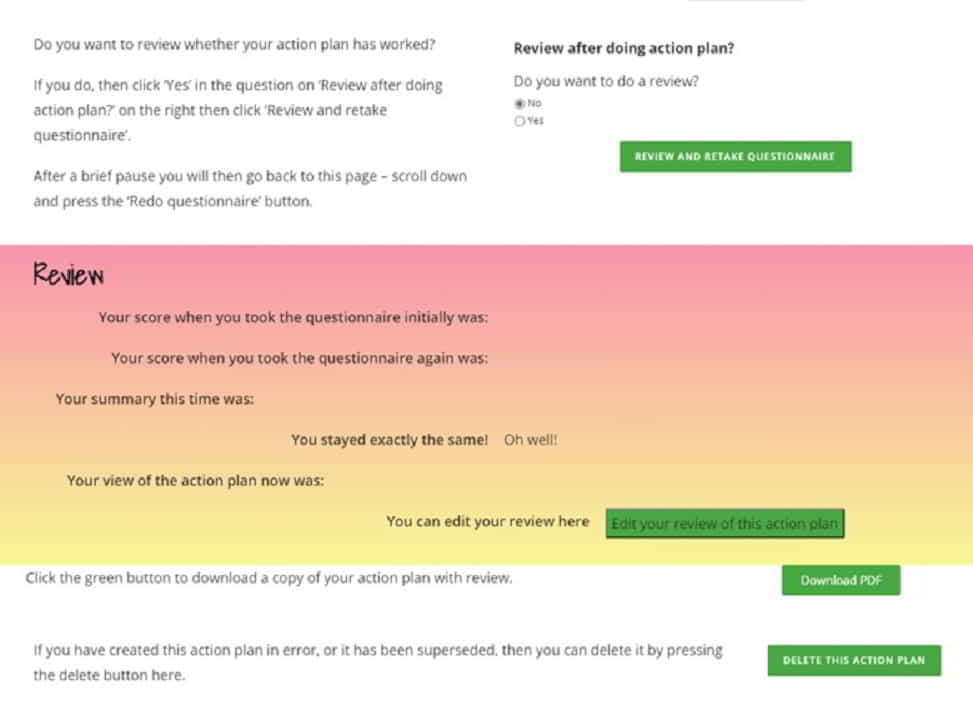
Once you feel you’ve made enough progress on your action plan, you can summarise it and then review whether you’ve made any progress, by re-taking the original questionnaire on that health area.
When you’ve finished, you can download a PDF of your action plan.

